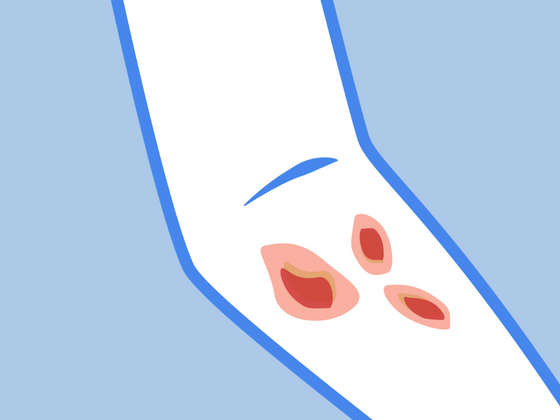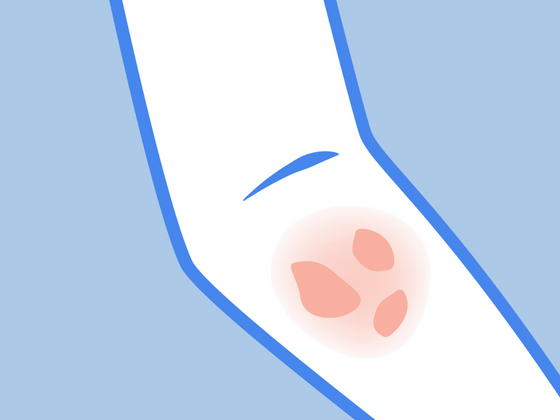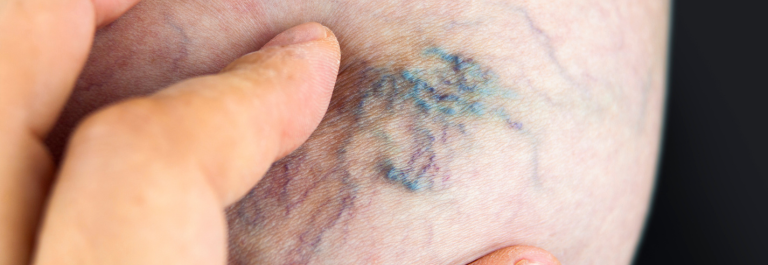Contact dermatitis is one of the many forms of eczema. It occurs when the skin reacts with inflammation or irritation after contact with something that triggers an allergic reaction. The skin rash can be red, itchy, and uncomfortable...and make it difficult to get through the day or night without scratching.
In this blog post, we discuss contact dermatitis in more detail, including:
- Contact dermatitis symptoms
- Contact dermatitis causes
- Natural ways to soothe your itchy rash
Read on to learn more about contact dermatitis and how you can soothe your skin rash the natural way.
What is contact dermatitis?
Contact dermatitis is a skin reaction. The condition occurs when you touch or come into contact with something your body doesn't agree with. Usually, these are common household objects or irritants that most people find harmless. Unlike atopic dermatitis, contact dermatitis doesn't run in families and isn't linked to hay fever or asthma. But similarly to atopic dermatitis, contact dermatitis is also linked to itchy skin and a painful rash.
Contact dermatitis causes
There are 2 main types of contact dermatitis: allergic contact dermatitis and irritant contact dermatitis.
Allergic contact dermatitis:
Allergic contact dermatitis is an allergic reaction that appears as an itchy skin rash a day or two after the skin is exposed to an allergen. When you touch a trigger, your immune system mistakenly believes it is under attack and springs into action to fight the invader by releasing histamine. This is what causes the itchy rash. Some common causes of allergic contact dermatitis include:
- poison ivy or poison oak
- hair dyes
- latex gloves
- nail polish
- nickel
- fragrances in soaps, shampoos, and other beauty products
Irritant contact dermatitis:
Irritant contact dermatitis is the more common form of contact dermatitis. It doesn't involve an allergic reaction by the immune system. Rather, the condition occurs when skin cells are damaged by repeated exposure to irritating substances like detergent for sensitive skin, soaps, bleach, makeup, and hair dye. People who work in jobs that require frequent hand washing, such as healthcare workers, are at increased risk of developing irritant contact dermatitis.
Contact dermatitis symptoms
Some common symptoms of allergic contact dermatitis and irritant contact dermatitis, include an itchy rash, burning or stinging sensation, or swelling. Other symptoms can include dry, cracked, or scaly skin. In severe cases, contact dermatitis can cause blisters that ooze or crust like with contact dermatitis weeping eczema.
Who's at risk for developing contact dermatitis?
While anyone can develop contact dermatitis, the people more likely to experience contact dermatitis are people whose jobs require daily contact with irritating chemicals. These can include a mechanic, healthcare provider, custodian, and hairstylist.
How is contact dermatitis treated?
To treat contact dermatitis, we recommend the following natural remedies:
Wash with a mild soap
To avoid skin irritation, we recommend washing with a natural eczema soap like this Coconut and Sunflower Oil Soap Bar with is made with shea butter, sunflower oil, and coconut oil. This nourishing cleansing lather is made with just 3 ingredients. It's safe for both babies and adults.
Avoid scratching
These Cotton ScratchSleeves with Scratch Mittens for kids and these Cotton Adult Scratch Sleeves with Anti Itch Mitts help protect the skin from relentless scratching. This helps reduce the risk of infection because the skin will be less likely to break.
Moisturize with a natural cream or ointment
This eczema cream Nourish + Hydrate Manuka Balm keeps the skin well hydrated without irritating it. It's made with just 6 natural ingredients, all of which are known for their healing properties.
How to prevent contact dermatitis
The best way to prevent allergic contact dermatitis or irritant contact dermatitis is to avoid contact with the specific substance that triggers allergic reactions. You can prevent contact dermatitis by avoiding common allergens, choosing fragrance-free products, and washing your hands immediately after coming into contact with a known irritant.
However, we realize that you may not always know when your skin will react with an allergic response. That's why, when trying a new skincare product, we recommend doing a patch test first. This involves putting a small amount of product on your skin and monitoring your skin's reaction. If there is no reaction, you can then apply the product to the affected areas.
Soothe your contact dermatitis today
Give this natural contact dermatitis treatment a try to soothe your contact dermatitis and sensitive skin today.








